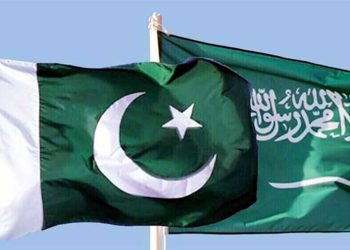Subhan Mahmood
MS International Relations Scholar
Muslim youth university Islamabad
Geo politics of India and maritime potential of Pakistan
The geopolitics of India is shaped by its location in South Asia, with the Himalayan mountain range to the north and the Indian Ocean to the south. India has a land border with seven neighboring countries, including Pakistan to the northwest, China to the northeast, and Bangladesh to the east. The country has a long history of conflicts and tensions with its neighbors, especially Pakistan, over issues such as territorial disputes, cross-border terrorism, and the Kashmir conflict. In contrast, Pakistan’s strategic location at the crossroads of South Asia, Central Asia, and the Middle East has given it significant maritime potential. Pakistan has a coastline of about 1,050 km along the Arabian Sea, which makes it a potential hub for sea-based trade and commerce. However, Pakistan’s maritime potential has been largely untapped due to a lack of investment in infrastructure and security concerns, including piracy and terrorism.
India, on the other hand, has been focusing on developing its maritime capabilities to become a dominant player in the Indian Ocean region. India has been building its naval power and strengthening its partnerships with other countries in the region, including Japan, Australia, and the United States. India’s strategy is aimed at ensuring its energy security, protecting its sea lanes of communication, and countering China’s growing influence in the region. while Pakistan has significant maritime potential, its geopolitical situation and security concerns have hindered its ability to fully exploit it. India, on the other hand, is focused on becoming a major maritime power and has been investing heavily in its naval capabilities to secure its interests in the Indian Ocean region.
The Indo-Pacific region has become a critical area of strategic interest for the United States in recent years. This region spans from the Indian Ocean to the Pacific Ocean and includes some of the world’s most populous and economically dynamic countries, such as India, China, Japan, and Australia.
The U.S. has identified several key interests in the Indo-Pacific region, including:
Security: The U.S. aims to maintain a stable and secure environment in the region. This includes ensuring freedom of navigation and promoting adherence to international law and norms. The U.S. has strong military alliances with countries in the region, such as Japan, South Korea, and Australia, to enhance its security posture.
Economic Interests: The Indo-Pacific region is a vital economic hub, with a large percentage of the world’s trade passing through its waters. The U.S. aims to promote economic growth and development in the region by expanding trade and investment ties with countries in the region.
Countering China’s Influence: China’s rise as a global power has been a major concern for the U.S., particularly in the Indo-Pacific region. The U.S. seeks to counter China’s influence in the region and prevent it from dominating the strategic waterways.
Strengthening Partnerships: The U.S. has been working to strengthen partnerships with countries in the region to achieve its strategic goals. This includes deepening diplomatic, economic, and military ties with like-minded countries, such as Japan, Australia, India, and South Korea.
Overall, the U.S. has significant interests in the Indo-Pacific region, and it is likely to remain a key player in the region for the foreseeable future.
Economic growth and political change are closely intertwined, and changes in one often have significant implications for the other. Economic growth can drive political change by creating new opportunities and increasing social mobility, which can lead to greater political participation and demands for greater political freedoms and rights. At the same time, political change can also have significant effects on economic growth, as changes in government policies, regulations, and institutions can either facilitate or hinder economic growth.
One example of how economic growth can drive political change is the case of South Korea. In the 1960s, South Korea was a poor and authoritarian country, ruled by a military government that tightly controlled economic and political activity. However, the government embarked on a program of economic development, promoting export-oriented industries and investing heavily in infrastructure and education. This led to rapid economic growth, which in turn created a new middle class with rising expectations and demands for political freedoms and democracy. Eventually, this pressure led to a transition to democracy in the late 1980s. On the other hand, political change can also have significant effects on economic growth. For example, changes in government policies and institutions can either facilitate or hinder economic growth. When a new government comes to power, it may introduce new policies and regulations that can either stimulate or stifle economic activity. Similarly, weak or corrupt institutions can hinder economic growth by creating uncertainty, reducing investor confidence, and hindering the efficient functioning of markets.
It is difficult to predict with certainty what major events may occur in the United States, but here are some potential scenarios that could impact the country:
Natural Disasters: The United States is vulnerable to natural disasters such as hurricanes, wildfires, tornadoes, and earthquakes. These disasters can cause significant damage to infrastructure and property, and loss of life, and can disrupt the economy and daily life.
Geopolitical Tensions: The United States is involved in several geopolitical tensions, including with China, Russia, and North Korea. Any escalation in these tensions could potentially lead to a military conflict or economic sanctions that would impact the U.S.
Cyber security Threats: The United States is increasingly vulnerable to cyber security threats, including hacking, data breaches, and ransom ware attacks. These attacks could target critical infrastructure, businesses, or individuals, leading to significant disruptions and economic losses.
Economic Recession: The U.S. economy is subject to periodic cycles of expansion and contraction. A prolonged recession could impact the economy, leading to job losses, reduced economic growth, and social unrest.
Political Unrest: The United States has experienced significant political unrest in recent years, including protests and violent demonstrations. Continued polarization and division could lead to more significant political unrest, with potential impacts on the economy, public safety, and political stability.
Public Health Crisis: The ongoing COVID-19 pandemic has highlighted the potential for public health crises to impact the United States and the world. Future pandemics or other health crises could have significant impacts on public health, the economy, and daily life.
Overall, the United States faces a range of potential major events that could impact the country in various ways. While it is impossible to predict with certainty what will occur, being aware of potential risks can help individuals and organizations prepare and mitigate potential impacts

















